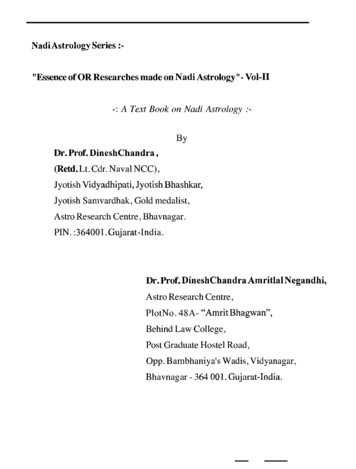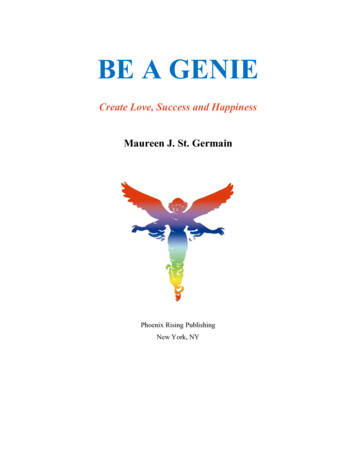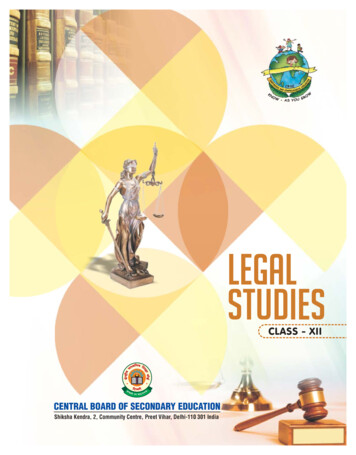
Transcription
LegalStudiesCLASS - XIICENTRAL BOARD OF SECONDARY EDUCATIONShiksha Kendra, 2, Community Centre, Preet Vihar, Delhi-110 301 India
LegalStudiesIIClassCS i s a endraComm nity entre Preet i arUCel iIIndia
Legal Studies Class IIPrice: First Edition 2014, CBSE, IndiaCopies: 2000This book or part thereof may not be reproduced byany person or agency in any manner.Published By:The Secretary, Central Board of Secondary Education,Shiksha Kendra, 2, Community Centre, Preet Vihar,Delhi-110301Design, Layout:Multi Graphics, 8A/101, WEA Karol Bagh,New Delhi-110005 Phone: 011-25783846Printed By:Dee Kay Printers 5/37A Kirti Nagar Indl. Area, New Delhi - 110015Phone: 25938138, 25414260
Hkkjr dk lafo/kumísf'kdk1ge] Hkkjr ds yksx] Hkkjr dks ,d lEiw.kZ izHkqRo&laiUu lektoknh iaFkfujis{k yksdra kkRed x.kjkT; cukus ds fy,] rFkkmlds leLr ukxfjdksa dks%lkekftd] vkfFkZd vkSj jktuSfrd U;k;]fopkj] vfHkO;fDr] fo'okl] /eZvkSj mikluk dh Lora krk]izfr"Bk vkSj volj dh lerkizkIr djkus ds fy,rFkk mu lc esa O;fDr dh xfjek2vkSj jk"Vª dh ,drk vkSj v[kaMrklqfuf'pr djus okyh ca/qrk c kus ds fy,n ladYi gksdj viuh bl lafo/ku lHkk esa vkt rkjh[k 26 uoEcj] 1949 bZñ dks ,rn }kjk bl lafo/ku dks vaxhÑr]vf/fu;fer vkSj vkRekfiZr djrs gSaA12-lafo/ku (c;kyhloka la'kks/u) vf/fu;e] 1976 dh /kjk 2 }kjk (3-1-1977) ls ¶izHkqRo&laiUu yksdra kkRed x.kjkT; ds LFkku ij izfrLFkkfirAlafo/ku (c;kyhloka la'kks/u) vf/fu;e] 1976 dh /kjk 2 }kjk (3-1-1977) ls ¶jk"Vª dh ,drk ds LFkku ij izfrLFkkfirAHkkx 4 dewy dÙkZO;51 d- ewy dÙkZO; & Hkkjr ds izR;sd ukxfjd dk ;g dÙkZO; gksxk fd og &(d) lafo/ku dk ikyu djs vkSj mlds vkn'kksZa] laLFkkvksa] jk"Vªèot vkSj jk"Vªxku dk vknj djs([k) Lora krk ds fy, gekjs jk"Vªh; vkanksyu dks izsfjr djus okys mPp vkn'kksZa dks ân; esa latks, j[ks vkSj mudk ikyu djs(x) Hkkjr dh izHkqrk] ,drk vkSj v[kaMrk dh j{kk djs vkSj mls v{kq.k j[ks(?k) ns'k dh j{kk djs vkSj vkg oku fd, tkus ij jk"Vª dh lsok djs(Ä) Hkkjr ds lHkh yksxksa esa lejlrk vkSj leku Hkzkr Ro dh Hkkouk dk fuekZ.k djs tks /eZ] Hkk"kk vkSj izns'k ;k oxZ ij vk/kfjr lHkhHksnHkko ls ijs gksa] ,slh izFkkvksa dk R;kx djs tks fL k;ksa ds lEeku ds fo#¼ gSa(p) gekjh lkekfld laLÑfr dh xkSjo'kkyh ijaijk dk egÙo le s vkSj mldk ijh{k.k djs(N) izkÑfrd i;kZoj.k dh ftlds varxZr ou] hy] unh] vkSj oU; tho gSa] j{kk djs vkSj mldk lao/Zu djs rFkk izkf.kek k ds izfrn;kHkko j[ks(t) oSKkfud n f"Vdks.k] ekuookn vkSj KkuktZu rFkk lq/kj dh Hkkouk dk fodkl djs( ) lkoZtfud laifÙk dks lqjf{kr j[ks vkSj fgalk ls nwj jgs( k) O;fDrxr vkSj lkewfgd xfrfof/;ksa ds lHkh {ks kksa esa mRd"kZ dh vksj c us dk lrr iz;kl djs ftlls jk"Vª fujarj c rs gq, iz;RuvkSj miyfC/ dh ubZ mapkb;ksa dks Nw ys1(V) ;fn ekrk&firk ;k laj{kd gS] Ng o"kZ ls pkSng o"kZ rd dh vk;q okys vius] ;FkkfLFkfr] ckyd ;k izfrikY; ds fy;s f'k{kk dsvolj iznku djsA1-lafo/ku (N;klhoka la'kks/u) vf/fu;e] 2002 dh /kjk 4 }kjk izfrLFkkfirA
THE CONSTITUTION OF INDIAPREAMBLEWE, THE PEOPLE OF INDIA, having solemnly resolved to constitute India into a 1SOVEREIGNSOCIALIST SECULAR DEMOCRATIC REPUBLIC and to secure to all its citizens :JUSTICE, social, economic and political;LIBERTY of thought, expression, belief, faith and worship;EQUALITY of status and of opportunity; and to promote among them allFRATERNITY assuring the dignity of the individual and the2 unity and integrity of the Nation;IN OUR CONSTITUENT ASSEMBLY this twenty-sixth day of November, 1949, do HEREBY ADOPT,ENACT AND GIVE TO OURSELVES THIS CONSTITUTION.1.Subs, by the Constitution (Forty-Second Amendment) Act. 1976, sec. 2, for "Sovereign Democratic Republic” (w.e.f. 3.1.1977)2.Subs, by the Constitution (Forty-Second Amendment) Act. 1976, sec. 2, for "unity of the Nation” (w.e.f. 3.1.1977)THE CONSTITUTION OF INDIAChapter IV AFUNDAMENTAL DUTIESARTICLE 51AFundamental Duties - It shall be the duty of every citizen of India(a)to abide by the Constitution and respect its ideals and institutions, the National Flag and the NationalAnthem;(b)to cherish and follow the noble ideals which inspired our national struggle for freedom;(c)to uphold and protect the sovereignty, unity and integrity of India;(d)to defend the country and render national service when called upon to do so;(e)to promote harmony and the spirit of common brotherhood amongst all the people of India transcendingreligious, linguistic and regional or sectional diversities; to renounce practices derogatory to the dignity ofwomen;(f)to value and preserve the rich heritage of our composite culture;(g)to protect and improve the natural environment including forests, lakes, rivers, wild life and to havecompassion for living creatures;(h)to develop the scientific temper, humanism and the spirit of inquiry and reform;(i)to safeguard public property and to abjure violence;(j)to strive towards excellence in all spheres of individual and collective activity so that the nation constantlyrises to higher levels of endeavour and achievement;1(k) to provide opportunities for education to his/her child or, as the case may be, ward between age of 6 and14 years.1.Subs. by the Constitution (Eighty - Sixth Amendment) Act, 2002
ForewordThe importance of learning about the essential nature of law and the concerned legal systems cannot beoverstated. Familiarity with law enhances one's understanding of public affairs and provides a cleareridea about one's rights and obligations as a citizen. It may also be helpful in eliminating some of themyths about law. Another advantage is that an understanding of law can undoubtedly encouragetalented students to pursue a career in law-an objective which is laudable in its own right.The objective of introducing legal studies at the Class I and II level is a modest attempt at providingyoung people a grasp of some of the essential elements of law that govern our lives. The course seeks toprovide a historical background and evolution of our legal system. The development of the CommonLaw system in India and the establishment of various types of courts mark important milestones in ourlegal history. An understanding of these developments and our own legal system is a key to groominggood citizens. In addition to this, the Legal Studies course seeks to introduce students to some topics ofpractical utility including certain substantive areas of law such as torts, contracts, property, concept ofrule of law, principles of justice, the differences between criminal and civil cases, various forms ofdispute resolution, rights available to the accused at various stages of the criminal investigativeprocess, some of the key components of Human Rights, etc.The syllabus of this course as well as the content of this book is framed in a way that has objectivesbeyond aspiring one to undertake a formal law degree upon graduating from grade II. The materialspresented in the two volume books (grade I and II) offer basic background on what law is all aboutboth in domestic as well as international contexts and serves to benefit those interested in pursuing alaw degree or preparing for other competitive exams which require a relevant legal component. Whilethese two purposes have been some of the main motivating factors behind launching this course,preparing syllabus and writing the book to adequately suit the standards of senior secondary levelstudents have been an extremely challenging process. The complex legal materials had to be selectedand simplified enough for the general understanding of students. This may sometimes lead to theongoing criticisms of less or over simplification and leaving out many other relevant areas and issuesin every topic or merely presenting information. However, there are instances where information andanalysis are inseparable. All sources referred to in this work have been attributed at the end of everysection. Finally, the process is continuous; there is an ongoing evaluative mechanism in place to help usrevise, update and re-work this effort to ensure we continue to respond to the needs of the students,teachers and others alike.Special thanks are due to the Study Material Development Committee of Legal Studies, its ConvenerProf. James J Nedumpara and Dr. Sadhana Parashar, Professor & Director Academics, Research,Training & Innovation , CBSE for guiding the team and Mr. Ram Shankar, Assistant Professor &Joint Director, CBSE for academic input, editing and overall co-ordination.We would appreciate your comments and feedback on the contents of this book and they would beconsidered for future editions.Vineet Joshi, IASChairman, CBSE
AcknowledgementAdvisory CommitteeShri. Vineet Joshi, IAS, Chairman, CBSE.Dr. Sadhana Parashar, Professor & Director (ART&I), CBSE.Material ProductionProf. James J. Nedumpara, Associate Professor, Jindal Global Law School,OP Jindal Global University, Sonipat, Delhi.Mr. Sandeep Kindo, University of Wisconsin – Madison, USA.Ms. Geetanjali Sharma, Cambridge University.Ms. Prem Raja Kumari, Advocate, Chennai.Mr. Kinshuk Jha, Assistant Professor, Jindal Global Law School,Sonipat, Delhi.Mr. Ram Shankar, Assistant Professor & Joint Director (GA&E), CBSE.EditingProf. (Dr.) K. V. Joseph, Trivandrum, Kerala.Prof. James J. Nedumpara, Associate Professor,Jindal Global Law School, OP Jindal Global University, Sonipat, Delhi.Ms. Swagata Sen Pillai, Founder Director, Kinkini Dhvani Institutionof Performing Arts, New Delhi.Mr. Ram Shankar, Assistant Professor & Joint Director (GA&E), CBSE.
Contentsi iarUnit o iUnit Aoa7a of Propertya of ontractsa of TortsIntrod ction to riminal a s in IndiaAdministrative aUnit Unit -r itration ri nali ation anlternati e i te e ol tionan it in In iaUnit -e al ro e ion in In iaUnit -e al er i eUnit - 7International Context777
Unit:i iarTo Understand the Following ConceptsCommon law, Adversarial system of law, Due process of law, Public Interest Litigation,Impartiality of judges, Judicial review, Separation of powers, Division of powers, Checksand balances, Basic structure, Collegium system in appointment of judges, Impeachment.Supreme Court of IndiaHigh CourtSpecialized TribunalsDistrict and SubOrdinate abourA. Structure, Hierarchy of Courts, and Legal Offices In India1.Structure & Hierarchy of Courts in IndiaThe Constitution of India lays out the framework of the Indian judicial system. Indiahas adopted a federal system of government which distributes the law enactingpower between the Centre and the States. Yet the Constitution establishes a singleintegrated system of judiciary comprising of courts to administer both Central andState laws. The Supreme Court located in New Delhi is the apex court of India. It isfollowed by various High Courts at the state level which function for one or morenumber of states. The High Courts are followed by district and subordinate courtswhich are known as the lower courts in India. To supplement the functioning of theCourts, there exist specialised tribunals to adjudicate sector specific claims such aslabour, consumer, service matter disputes.Supreme Court of IndiaThe Supreme Court of India came into being on 28 January 1950. It replaced both theFederal Court of India and the Judicial Committee of the Privy Council which were atthe apex of the Indian court system, under the colonial era. The Constitution of India1
as it stood in 1950 envisaged a Supreme Court with a Chief Justice and 7 Judges. TheParliament was granted the power to increase the number of judges in the comingyears. At present, the total strength of the Supreme Court is 31 judges including theChief Justice of India.High CourtsIndia consists of 24 High Courts at the state and union territory level. Each HighCourt has jurisdiction over a state, a union territory or a group of states and unionterritories. Below, the High Courts exists a hierarchy of lower courts functioning ascivil courts and criminal courts as well as the specialised tribunals. The Madras HighCourt in Chennai, Bombay High Court in Mumbai, Calcutta High Court in Kolkataand the Allahabad High Court in Allahabad are the first four High Courts in India.District and Sub-ordinate CourtsThe Courts that function below the High Courts are popularly known as the lowerCourts. They consist of district and sub-ordinate courts. Each state is divided intojudicial districts presided over by a 'District and Sessions Judge'. The judge is knownas a 'District Judge' when she/he presides over a civil case and a 'Sessions Judge'when he presides over a criminal case. The district judge is also called a 'MetropolitanSessions Judge' when she/he is presiding over a district court in a city which isdesignated as a metropolitan area by the State government. District judges may beworking with Additional District judges, depending upon the judicial workload.The district judge is the highest judicial authority below a High Court judge. TheDistrict Court also holds appellate jurisdiction and supervision over all sub-ordinateCourts below it. On the Civil side, the sub-ordinate Courts below the District Courtinclude (in ascending order) - Junior Civil Judge Court, Principal Junior Civil JudgeCourt, Senior Civil Judge Courts (also called sub-Courts). Sub-ordinate Courts onCriminal side (in ascending order) include- Second Class Judicial Magistrates Court,First Class Judicial Magistrate Court and Chief Judicial Magistrate Court.Apart from the sub-ordinate Courts, Munsiff Courts also form a part of thishierarchy. They are the lowest in terms of handling matters of civil nature andfunction below the sub-ordinate Courts. Their pecuniary limits, meaning the Court'sability to hear matters upto a particular claim for money, are notified by respectiveState Governments.Points to NoteA group of judges sitting together on a legal matter in the Court constitutes a bench. The lawyersconstitute the members at the bar.A division bench comprises of two or three judges.A constitutional bench comprises of five or more judges and may even extend to thirteen judges2
TribunalsApart from these judicial bodies, Indian judiciary is also characterised by numeroussemi-judicial bodies involved in dispute resolution. These bodies function as semi orquasi-judicial bodies because they may consist of administrative officers or judgeswithout a legal background. Yet they function in their judicial capacity and hearrelevant legal matters and settle claims between the parties.Tribunals have been constituted under specific constitutional mandate enshrined inthe Constitution of India or through legal enactments, e.g. a law passed by thelegislature. Their creation aims at increasing efficiency in resolving disputes andreducing the burden on courts. Examples of some of these tribunals include: CentralAdministrative Tribunal (CAT) for resolving the grievances and disputes of centralgovernment employees, and State Administrative Tribunals (SAT) for stategovernment employees; Telecom Dispute Settlement Appellate Tribunal (TDSAT)for resolving disputes in the telecom sector in India; and the National Green Tribunal(NGT) for disputes involving environmental issues. Some of these tribunals functionwith regulators. Regulators are specialised government agencies that oversee the lawand order compliance in the relevant government sectors. For example, one of thetribunals TDSAT functions alongside the regulator, TRAI (Telecom RegulatoryAuthority of India) in formulating laws and policy for resolving telecom disputes inIndia. Therefore these tribunals complement and supplement the role of courts inmaintaining law and justice in the society.Let us PonderIndia has no court of appeal unlike the UK. The Law Commission has, in its 227th report,recommended setting up four regional benches of the Supreme Court in Delhi,Chennai/Hyderabad, Kolkata and Mumbai. However, the Full Court of the Supreme Court hasrejected the Law Commission's suggestion for establishing a Constitutional Bench in Delhi andCassation Benches in the four regions.The Indian Supreme Court hears more than 50,000 cases a year. The UK and US Supreme Courts, onthe other hand, hear less than 100 cases a year on average. India, unlike the US, has a unified judicialsystem. So each State does not have a separate hierarchy of courts that adjudicate state laws.Discuss the benefits and demerits of having regional benches for Supreme Courts in India.2.Salient Features of Indian JudiciaryIndia as a Common Law JurisdictionTaking its precedence from the British tradition of 'common law', India has adopted asimilar model. Under this scheme of the common law system, the decisions, ordersand judgments developed by the judges in India help in the creation anddevelopment of laws and legal principles, which becomes binding precedents for all3
subordinate courts in the hierarchy. Therefore, courts play a vital role in creatinglaws, especially where gaps in law exist, and the legislature or executive have failedto enact laws. Thus, apart from administering civil and criminal justice, courts andjudges serve a vital function in the federal set up of the country.Opposed to this model, is a concept of civil law system followed in countries such asGermany, Russia, and Continental Europe. The main difference between commonand civil law is with respect to the source of law. Under common law, judiciary canmake laws through judicial decisions of courts; however under civil law, only thelegislature or executive has the power to create laws and rules. This salient feature ofIndian judiciary in following a common law model further strengthens the role ofcourts in India.Adversarial Model of Dispute ResolutionCourts in India follow the adversarial system of adjudication as opposed to theinquisitorial model followed in several civil law countries. In an adversarial model,the role of lawyers representing the party becomes vital. Lawyers of the opposingparties present their cases before a neutral judge who in turn provides a decisionbased on the merits of the case, as presented by the lawyers. In the inquisitorialsystem of law, on the other hand, judges are more pro-active in adjudicating thematter. Rather than acting as neutral judges, they have rights to inquire and probeinto the matter, much like a police. Here the role of lawyers representing the partyand the role of judge cumulatively becomes important in determining the manner inwhich a civil case or criminal trial proceeds.Let us PonderChoose a civil law country in the world that follows an inquisitorial model of legal system. In thiscontext, find out the main differences in the legal systems between India and the chosen country?Discuss your findings in class.3.Attorney General of India and Law officers in IndiaThe discussion on the structure of Indian judiciary would remain incomplete withoutan explanation of law offices and officers appointed by the central and stategovernments in India. Certain law offices at the Union and State level exist to advisethe executive wing of the government. These law officers are taken up by law officers,who derive their mandate either from the Constitution or other statutory enactmentsand rules. The Attorney General is the first legal officer of the country. The AttorneyGeneral of India is appointed by the President of India under Article 76 of theConstitution, which states that he can hold the office during the pleasure of thePresident. The Attorney General must be a person qualified to be appointed as aJudge of the Supreme Court, possessing adequate legal practice or have served as a4
judge for a requisite duration as mandated by the Constitution. It is the duty of theAttorney General for India to give advice to the Government of India upon legalmatters and to perform other duties of legal character as may be referred or assignedto him by the President. In the performance of his duties, he has the right to appear inthe Courts. This is known as a right to audience given to the Attorney General. Hemay also take part in the proceedings of the Parliament without a right to vote. Indischarge of his functions, the Attorney General is assisted by a Solicitor General andfour Additional Solicitors General. The position of the Solicitor General andAdditional Solicitors General is not recognised in the Constitution. However they aregoverned through rules enacted by the Parliament.Similar to the Attorney General of India, the position of Advocate General exists at thestate level. An Advocate General is a senior law officer who acts as a legal adviser tothe State Government. According to Article 165 of the Constitution, AdvocateGeneral is appointed by the Governor of the respective state. The Advocate General isthe chief legal advisor of the State and performs duties of a legal character includingrepresenting the State before the courts either through himself/herself or through thelaw officers or pleaders appointed by the State. The qualification required forappointment as an Advocate General is similar to that of a judge of a High Court. Theoffice of an Advocate General is held during the pleasure of the Governor, who alsodetermines the nature of remunerations for the Advocate General. AdditionalAdvocate Generals are also appointed to assist the office of the Advocate General.Group Activity"The Judiciary is an important pillar of the Indian judiciary . What is your perception of the Indianjudiciary? What do you think is the major role of the judiciary?B. Constitution, Roles and ImpartialityThe judiciary in India derives its powers and functions from the Constitution, whichtill date remains the fundamental legal text for the functioning of Indian democracy.1.Independence of Judiciary as a Constitutional SafeguardAs has been discussed in Part I (Legal Studies), Article 50 of the Indian Constitutionlays the rule of independence of judiciary. This is understood as judiciary'sautonomous status, separate from the executive or legislative wings of thegovernment. Independence of judiciary helps in the maintenance of rule of law,ensuring good governance and creating a free and fair society. The independentstatus of the judiciary and roles to be performed by it; can be understood as two sides5
of the same coin. In this context, one must understand the reasons for granting aspecial status to the judiciary:First, Judiciary's independence is linked to its role as the watch-dog in a democracy. Itmonitors and maintains the checks and balances over the other arms of thegovernment. Thus judiciary emerges as a mediator when any organ of thegovernment exercises 'excess power' which tends to violate the larger societal orindividual interest. For instance, the Indian Police has extensive powers for crimedetection and gathering evidence for prosecution of criminals. It is common for thepolice to interrogate suspect criminals in-order to gather the best evidence of thecrime. However such powers should not impinge upon the rights of the accused orthe suspected criminal. An accused cannot be coerced into giving statement pointingto his/her guilt. This right has been constitutionally guaranteed to the accused underArticle 20(3) of the Constitution, which states:" o person accused of any offence shall be compelled to be a witness against himself".Judiciary steps in when such delicate interests are at loggerheads. Similarly, whenthere is a thin line of difference as in case of a police exercising their power to gatherwitness, in the exercise of the 'legitimate' and 'excess' right of a state organ, the role ofjudiciary becomes vital.Second, in-order to ensure that constitutionally guaranteed freedoms such asfreedom to speak in public or peacefully assemble, are interpreted as per the trueconstitutional philosophy, judiciary has been kept free from any external pressures.This is particularly useful when judiciary is interpreting a case of conflict between saybetween the government (political party in power) and certain protesting people ofthe civil society who have peacefully articulate their opinions on social issues forexample, crime against women.Third, Judiciary acts as a guardian of fundamental rights which are constitutionallygranted to every citizen in India. Independence of judiciary was carved out duringthe formation of Indian Constitution as India was transitioning from a feudal to ademocratic order. It was done to fully translate the well-knit provisions of extensiverights guaranteed under the Constitution into the lives of average citizens. OurConstitution grants us unique rights such as:2 Civil and political rights- e.g. the right to life; right to freedom of discriminationbased on religion, race, caste, sex or place of birth.2 Economic, social and cultural rights- e.g. freedom to practice any religion;protection of interests of minorities.An independent and impartial Judiciary has empowered Indian citizens andperformed this role. Illustratively, one may look into the role of Court in giving an6
expanded meaningto Article 21 of the Indian Constitution which talks about ageneral right to life and personal liberty. For example, within this freedom, theSupreme Court has held that a street vendor has a right to operate on streets as sellingproducts on street is linked to his livelihood and daily living which is protected underArticle 21. Similarly, the Supreme Court has also stated that those who are aged,disabled and destitute in India including men and women have a right to food, whichis most essential for their survival. State has a corresponding duty to provide themwith food. This right has been read into the general right under Article 21. Therefore,the Court is performing the role which it was granted at the time of the drafting ofIndian constitution. Even though the drafters did not include specific rights such aslivelihood and food, within the constitutional ambit of enforceable fundamentalrights, they are now made available to the citizens of India as matters of rights. Thishas been possible only by the interpretation and rule making function of the courts inIndia.In the domain of criminal law as well, independence of judiciary is linked to thegranting of a fair trial to the accused. This becomes extremely important even whenthe accused are foreign nationals or persons who have committed crimes against thestate, e.g. terrorists.Independence of judiciary is vital for the respect of due-process of law. Due process oflaw means that the State must respect all the legal rights that are owed to a person andconfirm to the norms of fairness, liberty, fundamental rights etc. Only anindependent judiciary can make this concept operational. History has evidenced thatwhenever the independence of judiciary has been disturbed, it has directly impactedupon the due process of governance and rights granted to average citizens.These lessons teach us that even in grave political circumstances, the rights of citizensshould not be compromised and this could only be possible through an independentand impartial judiciary. Therefore independence of judiciary remains a vital and coreprinciple even in the modern democracy.Let Us PonderAre there examples of non-independent judiciaries in the world? Find examples of social or politicalevents and occurrences in newspapers or other sources that suggest some countries may not haveindependent judiciary.2.Role of Indian JudiciaryThe Role of CourtsIndian judiciary comprises of the Supreme Court, High Court, Sub-ordinate Courtsand other Tribunals. The role of these courts along with their composition, powersand procedures for functioning have been elaborated in the Constitution.7
Supreme CourtAdjudicatorInterpreterAd isorActi istDifferent Roles of the Supreme Court of IndiaThe Supreme Court of India primarily exercises the role of an adjudicator andinterpreter. This is explained through different jurisdictions vested with the court. Itsrole as an adjudicator and interpreter can be understood through the original andappellate jurisdiction vested with the Court. Under Article 131 of the Constitution,the Supreme Court is granted original jurisdiction. This power is exercised toadjudicate amongst disputes between Union and one or more states and between twoor more states. Such disputes must involve some question of law or fact on which theexistence or extent of legal rights can be adjudicated. For example, the disputebetween the sharing of river or other natural resources between two states in Indiacan be directly brought to the Supreme Court under exercise of its originaljurisdiction.Article 32 of the Constitution further gives an extensive original jurisdiction to theSupreme Court for the enforcement of fundamental rights of the citizens, throughissuing directions, orders and writs (See Part I, Legal Studies Class I). This ispopularly known as the 'Writ Jurisdiction' of the Court.The appellate jurisdiction of the Supreme Court can be invoked by a certificategranted by the High Court. Appeal to the Supreme Court may be made against anyjudgement, decree or final order of a High Court in both civil and criminal cases. Likethe exercise of original jurisdiction, these cases must involve a substantial question oflaw as to the interpretation of the Constitution. Substantial questions of law ashighlighted above connote questions of law or fact on which the existence or extent oflegal rights can be adjudicated.Apart from the listed appellate powers of the Court, the Supreme Court isalso vestedwith wide appellate jurisdiction over all Courts and Tribunals as provided in Article136 of the Constitution. Under its discretion, the Court may grant a special leave toappeal and receive any judgment, decree, determination, sentence or order in anycause or matter passed or made by any Court or Tribunal in the territory of India.Besides being an adjudicator and interpreter, Supreme Court also functions as an8
adviser. Court's advisory jurisdiction may be sought by the President under Article143 of the Constitution. This procedure is termed as "Presidential Reference" and isrecognised as the 'Advisory jurisdictio
The syllabus of this course as well as the content of this book is framed in a way that has objectives beyond aspiring one to undertake a formal law degree upon graduating from grade II. The mater
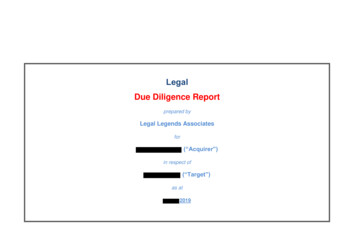
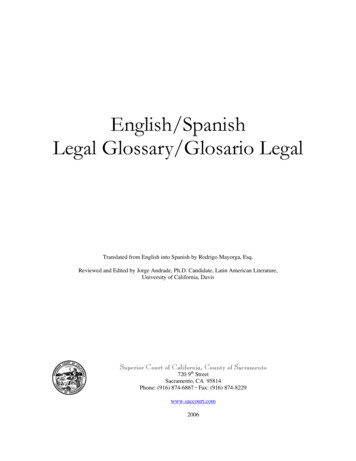

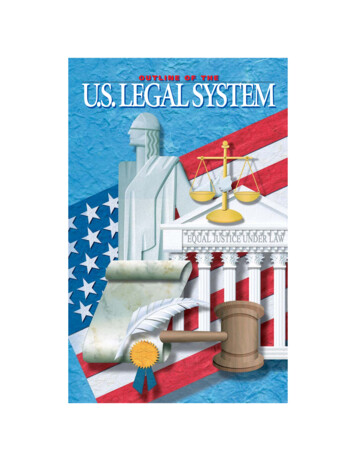
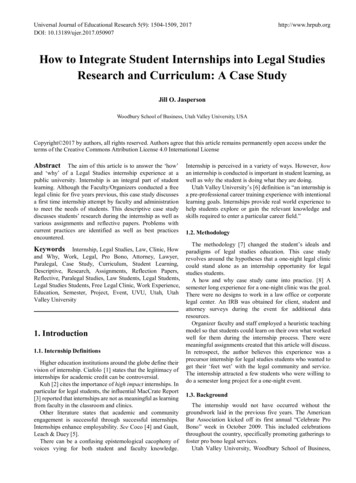
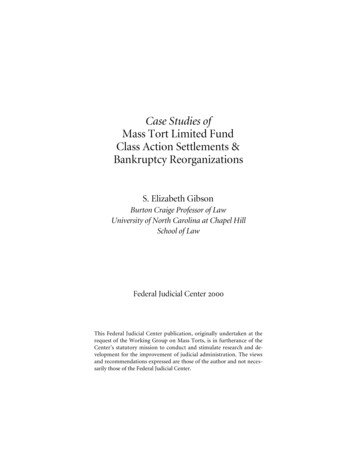

![English Text Book[1] - Weebly](/img/4/comprehension-and-communication-skills-in-english-engl101.jpg)

